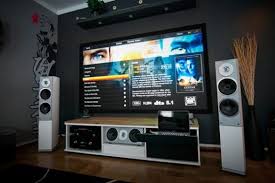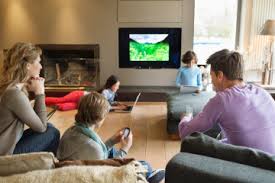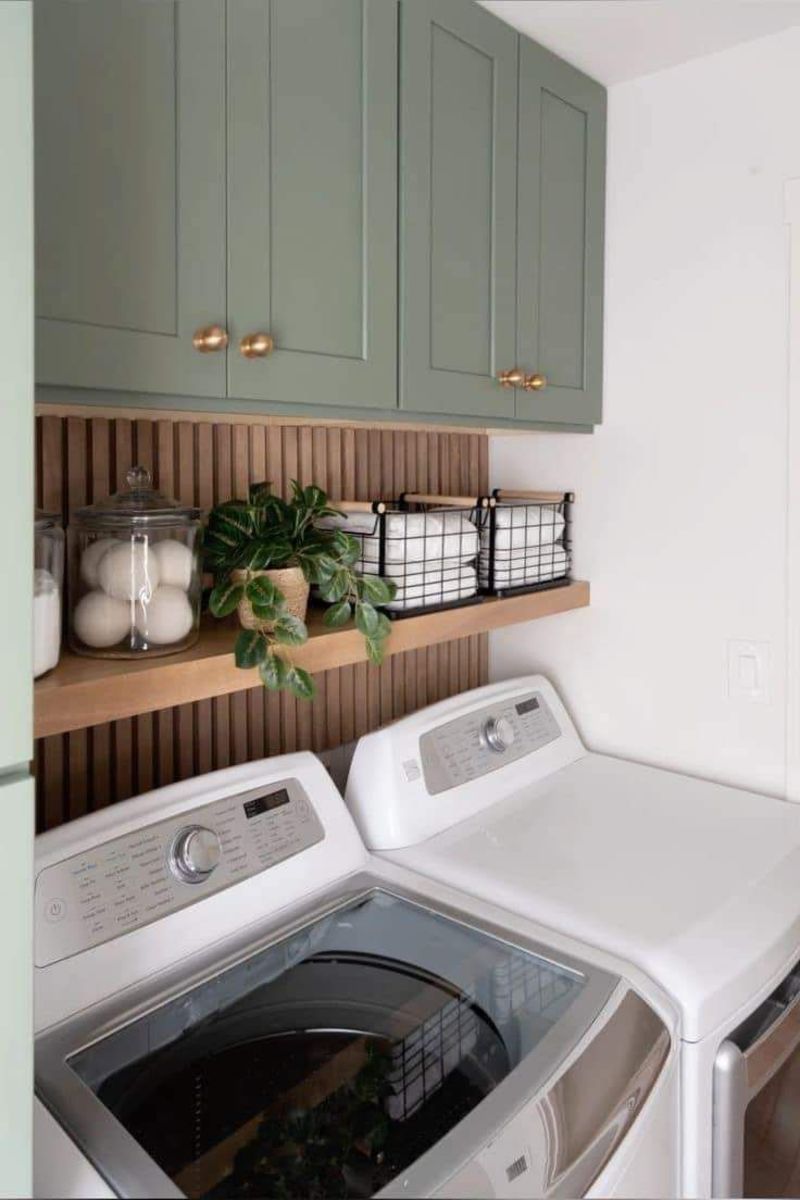Is There Still No Place Like Home?

Is there still no place like home? It certainly is an intriguing issue to take into consideration. It remains pertinent after having been posited and pondered over for centuries. The perfection of a domestic living environment has been a plight that the human race has strived to achieve for as long as it has existed. And with the all-inclusivity and intimacy of the very nature of one’s residence in the modern day, it is difficult to conceive a condition where inhabiting the comfort of one’s home could be more ideal than it currently is. But is it truly as marvellous and ecstatic as it is often purported to be?
Well, with the virtues of technological innovations constantly aiming to accommodate and comfort those using them as to their personal preference, that would definitely be the implication. But nothing is ever so rudimentary. Over the years, sheer ingenuity has crafted some of the most divine pieces of furniture to suffuse our homes with; ranging from beds and chairs, to televisions and entertainment systems, to even the decorative plants and ornaments-all in the pursuit of accommodating enriching embellishment.
It is an age-old desire to manufacture a quality atmosphere to bask in within our leisure time-of which we would be allocating the majority of it to-in a perfect world. The definition of the home environment has evolved from the primitive origin of the mere practical function of providing shelter from the harshness of the elements outside. It has been nurtured and cultivated to such a point of pedantic meticulousness, that one could argue that is has gone too far in the other direction.

Sure, when simplified down to it’s fundamental basics, the nature and necessity of locating an adequate area to populate has remained almost identical to how it was required in the stone age; where both large masses and smaller units of individuals occupied caves. But it has of course come a long way from those primitive times, as already highlighted. Particularly in the past century or so, architects of society have constructed the most ornate luxuries that people can privilege themselves to, and have mostly perpetuated a philosophy of accelerating and updating the enjoyment of the fantastic riches, while simultaneously retaining the core values of the experience of them.
Pantries and storerooms have become fridge-freezers and cupboards, closets and lockers have become walk-in wardrobes, and basements have become man-caves, but a house from the early 20th century and one from the early 21st are not completely foreign to one another.The elements that made the homes of the past so inhabitable have been refined now to a point of efficiency and portability in most regards, and extravagant gratuity in others. It obviously differs slightly from culture to culture, but mostly, the superficiality of the objects furnishing our homes transcends class, social status and even affluence, to a certain extent. That is in many ways the beneficial merit of the present day. What a time to be alive! Surely there is nothing left to be desired?

Well, unfortunately there is, and that is mostly due to the gluttonous avarice for more, that is just intrinsic to human nature. But those possessing a sense of logic, rationale, and perhaps even self-discipline of their impulses can recognise that it is not all that it is not all that it is cracked up to be. Those comprising that select minority possibly even want to reduce the consumption of some of the unessential trivialities that have debatably become over-saturated throughout society. It is already becoming fatiguing to discuss the disconnect of the most recent iteration of a generational inter-connectivity, and it’s easy to see why.
As technology has developed, so too has our conditioning to become dependent on the immersion in these outlets for escapism from the real world. Mobile phones, television, video games, DVDs, records and CDs, and even radio. They have all become quintessential and prominent staples of life in the home. They go almost disregarded and unacknowledged, as per the integration into the very nucleus of society. They are integral to life now, and have evolved much further beyond this.
Video games have advanced to Virtual Reality. DVDs have become accessible in high definition. Media is now streamable through services such as Netflix, Xbox Live and others, and that is just one facet of the features that are so closely associated with the home environment. But what is the purpose of all of these acknowledgements? Why is it so relevant? The issue is the very abuse of all the virtues. There is a discord in the insensitivity that the bliss of basking in the glory of all these magnanimous outlets inadvertently impels.
Humans collectively claim to be so sophisticated in achieving the remarkable feat of remotely interacting with one another and creating a greater sensation of intimacy between individuals, when more frequently than we’d care to admit, that is patently untrue. Why else would there be numerous campaigns propagating an acceptance of a “duty” to make a conceited effort to open our eyes to the world around us?

So, narrowing it down to the focal topic of the debate; the intoxication that we have pathologically become dependent on is of our own orchestration, and we must therefore face the repercussions of our culpability in that. Along with the fact that, beneath the superficial veil of extravagance, there is a sinister undertone of depravity and of inconsideration for our fellow person. And this is due to the influence of these “virtues” impacting our lives.
A simple observation of a modern home life; Mother sits in the sitting room reading an e-book on her kindle. Father is in the kitchen cooking with his pride and joy(the grill) while listening to music through the Amazon Echo. The youngest son is laying on his bed playing Minecraft online with his friends, while his older sister is obsessing over her makeup-examining every feature of her face in the mirror while listening to her iPod. And the oldest son is sat in front of his plasma screen television that is broadcasting Deadpool through it’s in-built Netflix application, while simultaneously surveying the internet on his iMac.

Another example: Two sibling brothers are vehemently attacking one another because of a dispute over who has the right to the “good” controller to play FIFA with, while sister complains to mother over the coffee spilt over her smart tablet. But to no avail, due to the preoccupation of a conversation on her iPhone. Father is also incompetently meandering around the house attempting to configure the wifi connection on his laptop. The recurring theme here of course is the lack of healthy intermingling with one another. They aren’t communally participating in activities together. When do they have the time? “There simply isn’t enough possibility!” One could argue.
To play devil’s advocate; take an activity almost exclusively synonymous with family time-dinner. Oh of course. This is phone time. Again. Simply through that analysis, it is clear to see how propounding a case for the disparagement of these fallacies could be justified. It’s not to say that these sedentary activities should be ostracised, or even discouraged. Like with everything however; moderation is key.
Find an equilibrium where time is distributed between becoming inundated with these opposite ends of the spectrum and appreciate every moment of it. Better still; even integrate them with one another. Break the ice by bonding through common interests. If indulgence in media and technology is insisted upon, then at least insist on opening an avenue for discussion and communication alluding to them.
These issues are salient to the current landscape of home life, but they are remiss for omitting the inclusion of all the potential disruptions and dissension into internal strife that can arise within a living environment. Both as a consequence of them, or due to other external factors jeopardising the robustness of the relationships within the home. Of course, pressures that can afflict interactions between people are nothing new; Conflict is a part of human nature that is just as inherent as our proclivity for fashioning welcoming atmospheres.
There was a precedent set such a long time ago, that there are sociological constructs that are implemented purely because of acclimatisation to the many tangents of turbulence and perturbation that can occur. These can transpire across the course of a series of arguments, debates and disputes, or even physical altercations.

The precarious state of the world currently can be interpreted as an analogous reflection of disaccord within the home. They can affect the home. People have a tendency to inflict personal turmoils out on others, and a significant source of that is current affairs. This is rarely ever intentional, but can be a traumatic detriment to the cohesiveness of a family unit. Tensions can flare up and come to the surface, and harm people emotionally, mentally and even physically. As mentioned, there is an implied expectation of the tenured past our race has with the experiences. But the concern with this in the present day is the fact that the persistence of the same struggles is suggestive of a failure to learn from mistakes. The disconnect through interactive connectivity, as already alluded to, contributes to the exacerbation of affronting circumstances, and is counter-productive.
So is there still no place like home? There could be cases made claiming that there has in fact always been a place like home. In the reflection of the behaviours and day to day procedures of the outside world and vice versa-it consolidates to form environments outside of the home that similarly resemble it. As much as we are conditioned to compartmentalise the two sections of our lives separately and focus on them only when appropriate, it is a logical impossibility. To resist the futility of the interspersion between home life and life in the world would be futile.
People war at home with one another, but it is not fought with guns and grenades; it is done with words, and unfortunately with fists on occasion. They are two parallels that are as close to identical to each other as possible, and only distinguish themselves apart due to the scale and the broadness of the expanse of the things on the periphery being caught in the cross-fire. Not to mention the fact that a lot of the activities in the outside world are executed in the name of preserving life within the domestic home.

People go to work. People run for government. People make statements, and found charities and participate in marches all because of their opinion on how it will and has directly and or indirectly influenced the home life of those they care about, and themselves. And that is only the beginning. And that is precisely how it penetrates the question. People carry the baggage of life everywhere they go, and that is how it relates to the profundity of the metaphor of home not being a particular place; but an atmospheric condition harboured by the mentality of an individual, as a sort of vessel.
The conveyance of one’s internal thought processes and emotions is a quintessence of human interaction and socialism. It is how people communicate and mingle, and the home acts as a stage for the broadcast of that. It is supposed be a safe place, where there should be no anxiety or hesitation over expressing oneself. That was the modern definition of a home not too long ago, but people seem reluctant to use the home for that purpose anymore.
That has been the basis of all of this pondering-because in order to argue whether there is still no place like home, the very identity of the home has to be established and clarified. It really can be discussed to the point of nauseam. But what home should be is a sanctuary. A place of tranquility and peace. Nothing in this world is perfect, but a home should represent a state of affairs that could resemble something as close to perfection as is possible. And to define perfection is to define “normal” and to define “happy”. It impurely predicated on the whims and preferences of specific person, and differs from one to another.

A definition of perfect for a relaxed and idle person may be simply the permission to spend the entire day in bed with a loved one. To facilitate to the demand on the modern aspects of life, they could also watch the television together. For a workaholic, the definition of perfect could be to attend the various responsibilities of maintaining the tidiness of the house. But perhaps the assistance of a family member would also be ideal, and they could provide themselves entertainment while they work by listening to music through their speakers set up around the house. The examples may be basic in execution, but in principal, it is what they symbolise that makes them is appealing to someone. So ubiquitous and congenial. One really could not lambaste a desire for spending some time with family in a house, doing literally anything. The phrase so states that “a house is just a building; it is a family that makes it a home”, after all.
Sonya Barsness, a Revisionary Gerontologist, candidly stated the sensations that were palpable in the atmosphere of her previous residence, in contrast to her current one when revisiting the area. Exclaiming “It was wonderful, and it felt like home. Yet, it wasn’t home anymore. We loved being there, and it was so comfortable, yet it was also bittersweet. Because we didn’t live there anymore.” While publishing for the ‘Being Heard’ blog. This provides intriguing introspective into a personal perception of the ambiance of every iota of the living experience, and speaks loudly to the intrinsic fixation on the importance of the role the home plays in a person’s life.

Karen Elizaga, a former Corporate Lawyer, confessed how the impact of 9/11 on her life was poignant and revolutionary, after narrowly avoiding a potential lethal fate; having rescheduled a flight that was supposed to take passage through New York-disclosing: “I think it’s important to remember that coming home really can be the most wonderful thing in the world.” when speaking to Joan Raymond of the New York Times. This was a revelatory realisation of how she had been all too preoccupied with the delightful pleasure she derived from her business travel to appreciate the subtle, but equally enticing privilege of simply occupying a domestic living space.
There have been a superfluous influx of candidates vying to improve and graduate the pedigree of the home in endeavours to appeal to people on these levels of consciousness. They have promoted features for luxurious indulgence in, and all but outright guaranteed the benevolent ramifications that they would entail. While there are undeniable advantages to these pursuits, it could be argued that the pandering of the aesthetic splendour of them are exploitative of the gullibility of consumers in a potential blind faith for ostentation. It cannot and should not be criticised for the sagacity in pre-eminently touching the pulse of society’s desires in a resonant way, and for the fact that it is not it’s own fault that it has fallen victim to the unfortunately manipulative propaganda of capitalist campaigns, but it has culminated to conform to that. And so therefore, that is one way in which the home environmental mentality fails to distinguish itself from the rest of the mundanity of the rest of the world.

The predatory devices that are employed to influence people into parting with their money and sometimes their values are an affliction that the world would do well to rid itself of. But as the furniture and various other benefits to modern home life have become more and more prevalent, the scope and span of their intrusion into our lives has spelt an unmitigated disaster. The only reason why people are so acceptive of this is because those that have orchestrated such an invasion have tweaked and fine-tuned every little element of minutia in order flatter and deceive consumers into believing that it is a pacifistic and munificent. People willingly assimilate the integration of these properties, and covet them in the admitted troves of precious riches that they are.
But once again, the cognisant awareness of this dynamic goes ultimately unacknowledged. People are as good as oblivious to it, and continually work as cogs in the wheel. Purchasing items to suffuse their homes with, and perpetuating the successful result of the intent behind advertisements: filling home and department stores that, as the tenure of time has progressed, have come to further resemble a conventional image of a home themselves. Most people love Ikea, but it is an audacious establishment; a collection of a myriad of different variants and interpretations of the rooms of a house, and presenting the option to browse the selections from their restaurant simultaneously. It is another contributing factor toward the uniformity of various “home” environments that cannot be too distinguishable from one another.
So, to definitively answer the question “is there still no place like home?” Is a rendered impossibility. It can only be responded to. And the response depends on how the question is interpreted. It’s entirely subjective. Is there no place like the home of the mind? No. Because, while they can possess similarities, they are as unique and individualised from one another as those whom holding the vision of it within their mind. But as far as a location or address, there are far too many similarities to deem a home entirely isolated in it’s distinct features.










